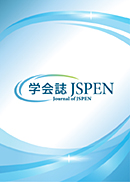Volume 2, Issue 4
Displaying 1-9 of 9 articles from this issue
- |<
- <
- 1
- >
- >|
-
2020Volume 2Issue 4 Pages 235
Published: 2020
Released on J-STAGE: April 02, 2021
Download PDF (493K)
-
2020Volume 2Issue 4 Pages 236-243
Published: 2020
Released on J-STAGE: April 02, 2021
Download PDF (939K) -
2020Volume 2Issue 4 Pages 244-251
Published: 2020
Released on J-STAGE: April 02, 2021
Download PDF (1164K) -
2020Volume 2Issue 4 Pages 252-261
Published: 2020
Released on J-STAGE: April 02, 2021
Download PDF (1063K) -
2020Volume 2Issue 4 Pages 262-269
Published: 2020
Released on J-STAGE: April 02, 2021
Download PDF (819K)
-
2020Volume 2Issue 4 Pages 270-276
Published: 2020
Released on J-STAGE: April 02, 2021
Download PDF (961K) -
2020Volume 2Issue 4 Pages 277-280
Published: 2020
Released on J-STAGE: April 02, 2021
Download PDF (1175K)
-
2020Volume 2Issue 4 Pages 281-287
Published: 2020
Released on J-STAGE: April 02, 2021
Download PDF (5036K)
-
2020Volume 2Issue 4 Pages 288
Published: 2020
Released on J-STAGE: April 02, 2021
Download PDF (496K)
- |<
- <
- 1
- >
- >|
